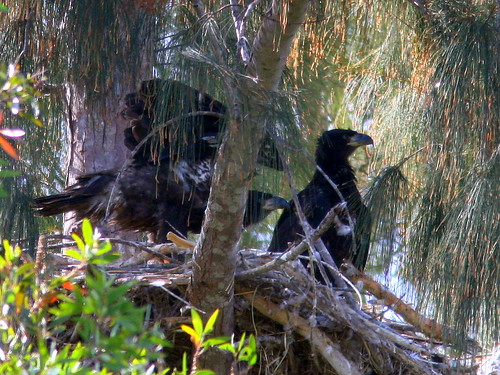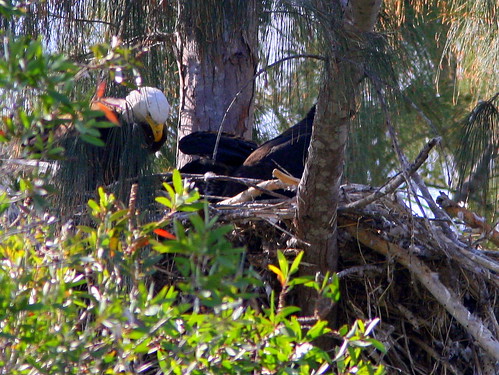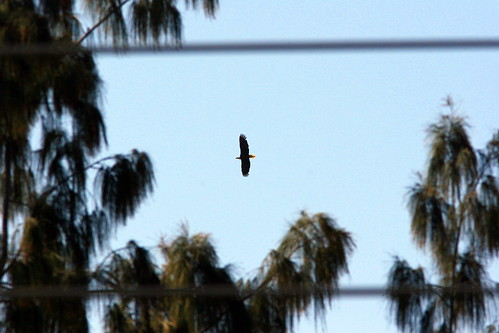Posted by: Ken @ 12:24 pm
The chicks hear the call of an approaching adult and are instantly on alert:
We arrived at the nest site about 9:15 this morning and stayed until 10:45. It was very hot. It is easy to see why Florida’s Bald Eagles need to get such an early start on nesting. Five months must pass after laying the eggs until the chicks are free-flying and independent. Sometimes, if the first eggs are taken or fail to hatch, they may try a second brood, which exposes the youngsters to even greater heat stress. “Hope” and “Justice” should leave the nest in about another two and a half weeks. Instinctively, they will gain the skills to hunt for themselves, but they will remain (decreasingly) dependent upon their parents for another month.
The eaglets are approaching a particularly dangerous time in their life cycle, as they exercise their wings and even attempt to briefly lift up into the air. Until they capable of free flight, they are at risk of losing their balance and falling to the ground. Their parents cannot fly through the trees to feed them, and even if they survive the fall, they face almost certain death from the foxes, bobcats and raccoons that congregate under the nest tree every night to find food scraps. Fledgling eagles face very high mortality on the day they leave the nest– in some studies, as many as 50% may die on their first flight. High tension wires and vehicles take their toll on urban eagles such as Hope and Justice. Inexperienced young eagles may eat roadkill, oblivious to the danger from passing automobiles. For the welfare of the eagle chicks, it will be important to have informed eagle watchers present as much of the time as possible.
This morning we found no one else present at the nest observation site, but soon two other people joined us. Both expressed plans to return regularly to stand watch. To help coordinate efforts and spread out coverage as much as possible, please use the FORUM on the Eagle Nest Watch Web page and enter the days and times you may be able to stand watch. Feel free to use a nickname, as this effort is entirely voluntary and on the honor system.
Eagle watchers should be vigilant, ready to report any chick that is missing or is seen falling, to Brian Mealey, the wildlife biologist who will come and rescue it before nightfall. His number is 305-975-0200. Or, notify the Florida FWC Wildlife Alert Number: Call 888-404-FWCC (888-404-3922). Cellular phone users, call *FWC or #FWC.
The eaglets know that food is on the way and begin begging even before the adult arrives with prey: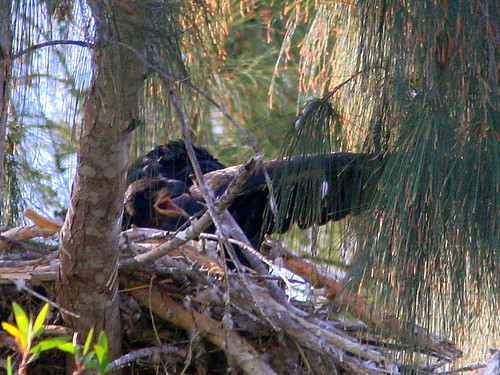
The adult simply drops the unidentified prey into the nest, and both chicks start tearing at it:
The adult then flies to the top of a nearby Australian Pine: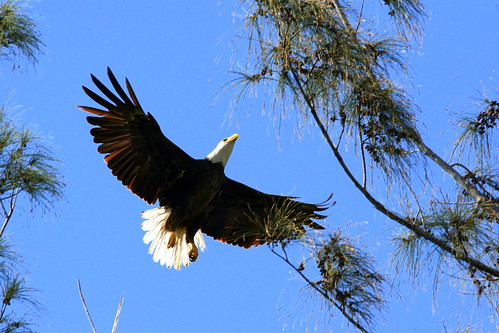
It balances on the flimsy branches:
Then, it settles down and cleans its beak and feet, which appear to have some white feathers clinging to them: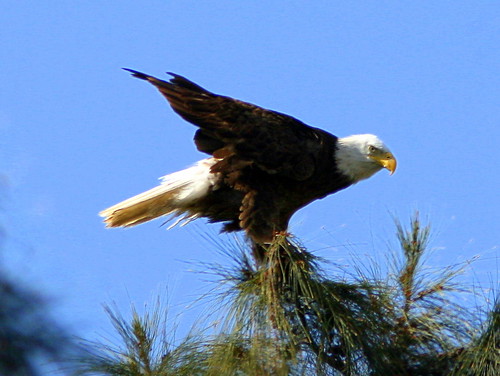
Framed by the high tension wires so menacingly near the nest, the second adult flies by and then rises high on the thermals:
Be sure to subscribe to the RSS feed and not miss any Blog posts about the eagles, or nature-watching in favorite “patches” near home in Florida and Illinois!













